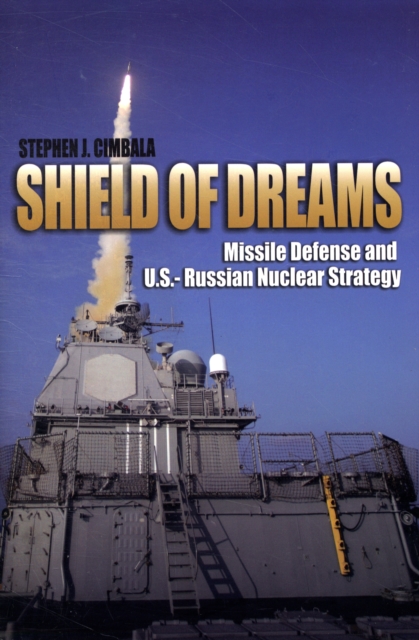
Shield of Dreams : Missile Defense in U.S. and Russian Nuclear Strategy Hardback
by Stephen J. Cimbala
Hardback
Description
This book considers the implications of deploying missile defenses, primarily nationwide missile defenses or NMD, by the United States and/or Russia within the current and next decade. The United States has already begun the process of limited ballistic missile defense (BMD) deployments and in 2007 announced plans to locate parts of the global BMD system in Eastern Europe.
This prospect of a European-based BMD system, in turn, alarmed Russian President Vladimir Putin and contributed to a deterioration in U.S.-Russian relations. The run-up to the American and Russian Presidential campaigns of 2008 witnessed a flurry of diplomatic demarches and military exchanges between the two states. Both Russia and the United States were scheduled for Presidential transitions, with the end of George W.
Bush's second term in office and the announced movement of Vladimir Putin to the Prime Minister's office.
The post-Bush and post-Putin era beginning in 2009 would open the door, either to improved detente between Moscow and Washington, or to increased acrimony over a number of issues left over from 2008. The analysis in this book considers how stable the U.S.-Russian nuclear deterrence and arms control relationship might be, once these SORT levels have been reached.
In addition, it considers whether the two states could reduce their numbers of deployed weapons below SORT levels, even to the level of "minimum deterrence" forces with hundreds instead of thousands of deployed weapons. If so, movement in the direction of smaller, but still highly competent, Russian and American nuclear forces could persuade other nuclear powers to reduce their inventories proportionately, making for a safer world.
The study offers a unique combination of quantitative and qualitative policy analysis with implications for military strategy and nuclear arms control in the present, and looking ahead to the period 2015 - 2020.There are other books and articles on missile defence, U.S. and Russian foreign and military policy, but nothing exactly like this study.
Information
-
Item not Available
- Format:Hardback
- Pages:256 pages
- Publisher:Naval Institute Press
- Publication Date:01/12/2008
- Category:
- ISBN:9781591141167
Information
-
Item not Available
- Format:Hardback
- Pages:256 pages
- Publisher:Naval Institute Press
- Publication Date:01/12/2008
- Category:
- ISBN:9781591141167






